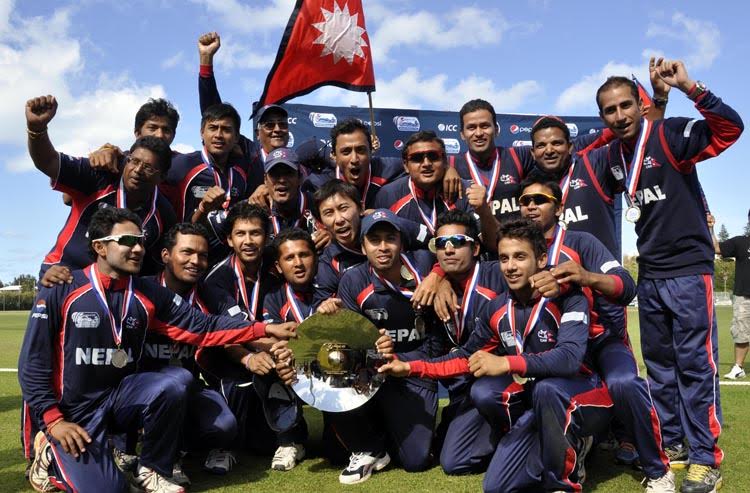Nepal gets T20 International ranking
KATHMANDU: The International Cricket Council (ICC) has featured Nepal in the main table of the ICC T20 ranking.
According to the ICC's official website, Nepal have been ranked 15 with 235 points and a rating of 34.
The teams that have completed at least eight T20 International matches are included in the ranking. Nepal made it to the list after playing the four-match T20 International series against the Netherlands recently.
Nepal had played three matches in the World T20 in Chittagong, Bangladesh last year. Later they played a match against Hong Kong in Sri Lanka.
Based on their impressive performance in the World Cup, the ICC had given Nepal and the Netherlands the T2o status together in July last year.
The ICC table, however, erroneously shows the number of matches that Nepal played as seven.
Sri Lanka are on the top with 1760 points and a rating of 135 while India and Australia are in the second and the third position respectively.
--..--
What is a rating?
A rating is worked out by dividing the points scored by the matches played, with the answer given to the nearest whole number. It can be compared with a batting average, but with points instead of total runs scored and matches instead of number of times dismissed.
After every T20I, the two teams each receive a certain number of points, based on a mathematical formula. Each team's new points total is then divided by its new matches total to give an updated rating. With batting averages, if you are dismissed in your next innings for more than your average, your average will increase. Conversely, scoring less than your average will cause it to fall. Similarly, under the Reliance ICC T20I Rankings method, the points awarded for a win will always be more than the rating the team had at the start of the match.
Equivalently, a team losing an T20I will always score fewer points than its rating. So a win will always boost a team's rating and a defeat will harm it. The ratings therefore give extra meaning to what might otherwise be regarded as 'dead rubbers'. A tie between a higher and lower rated team will slightly benefit the rating of the lower rated team at the expense of the higher rated team. A tie between two similarly rated teams will leave both their ratings unchanged. Matches abandoned with no result are always ignored.
What does a particular rating signify?
A team that over the period being rated wins as often as it loses while playing an average mix of strong and weak opponents will have a rating of close to 100. A rating of 100 could also correspond to a side that wins more often than it loses but who has generally played more matches against weak teams.
Similarly, if the majority of its matches are against strong teams, then a rating of 100 could be achieved despite having more defeats than victories.
In every match the total rating points available equals the sum of the initial rating of the two teams, so ratings can be thought of as being redistributed rather than created. There is therefore no 'inflation' in this rating system, so a rating of 120 suggests the same degree of superiority over opponents now as in the past or future, and a team can meaningfully compare its rating movements over time.
What principles are the ratings based on?
The Reliance ICC T20I Rankings table is based on the following principles:
- It is based on individual matches, not on series of matches. While the result of a T20I series will remain important for the competing countries, the ratings treat each match as an entirely separate event. Therefore every T20I will count (apart from No Results) and there is no need for a stipulated minimum series length.
- All T20Is are treated equally. Although the ICC World T20 final will have more at stake than any other match, every T20I is subject to the same formula for ratings purposes.
- No account is taken of venue. Whether a side wins a T20I at home, away or at a neutral venue will not affect the ratings.
- No account is taken of margin of victory. The rating system records only whether a team has won, drawn or tied each match.
- More recent results have a greater impact than older matches. To ensure the ratings fairly reflect current form, the weighting given to a particular match reduces as times passes.
Source: ICC






